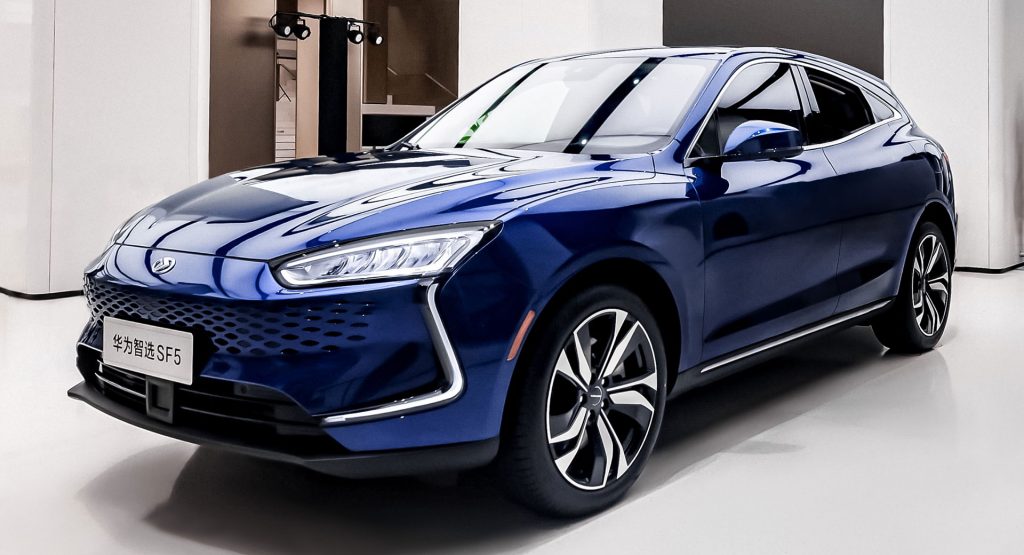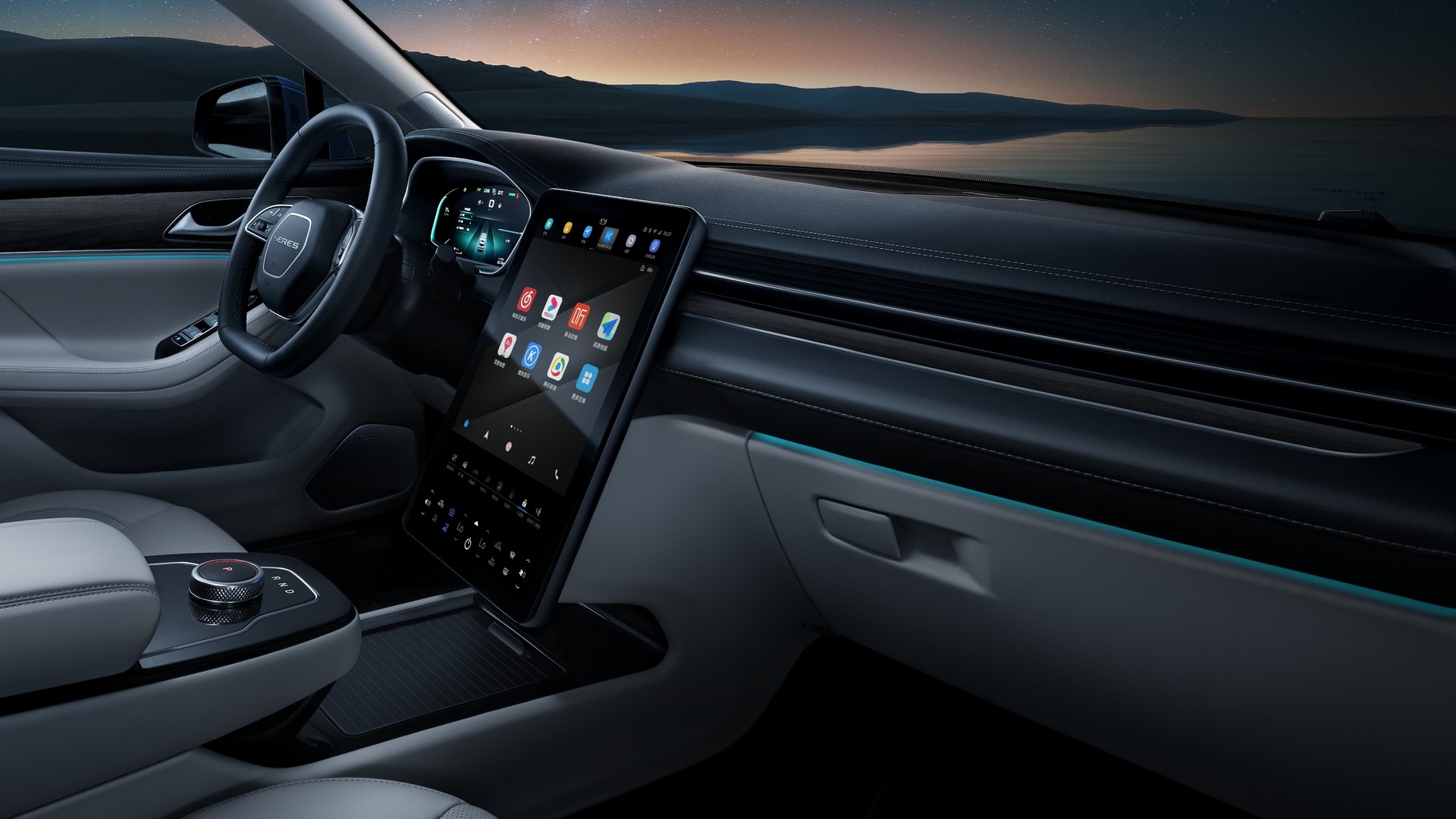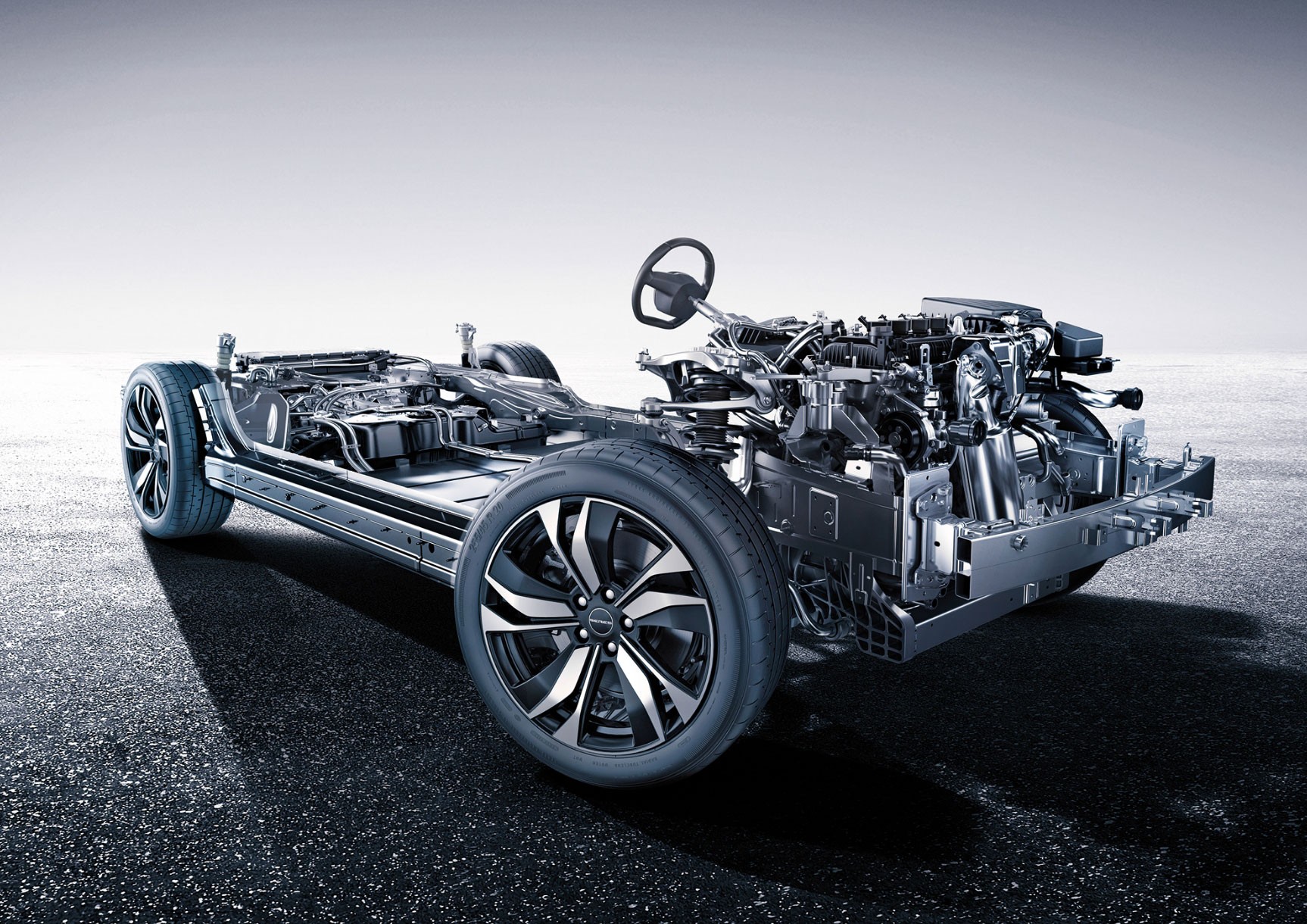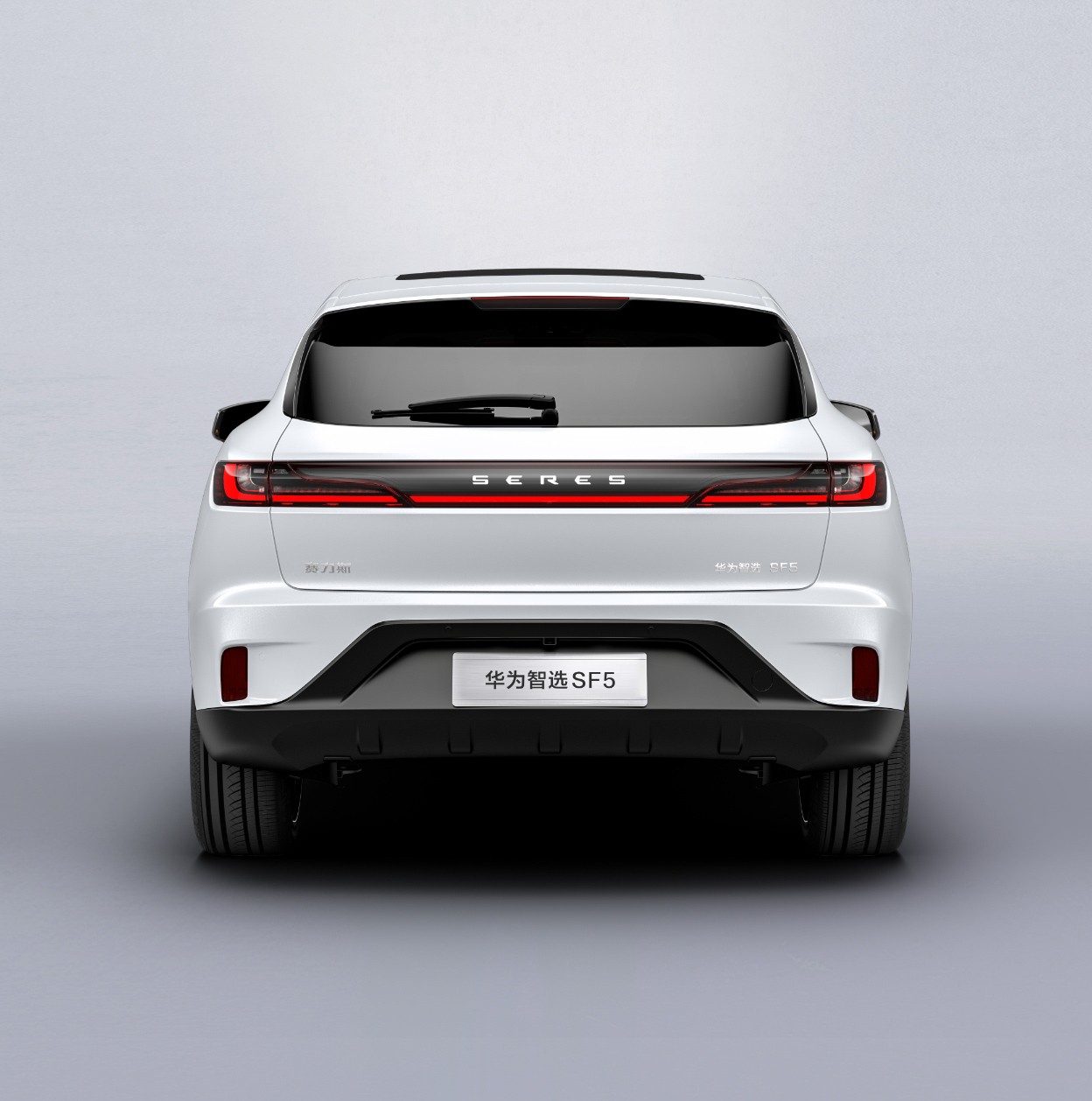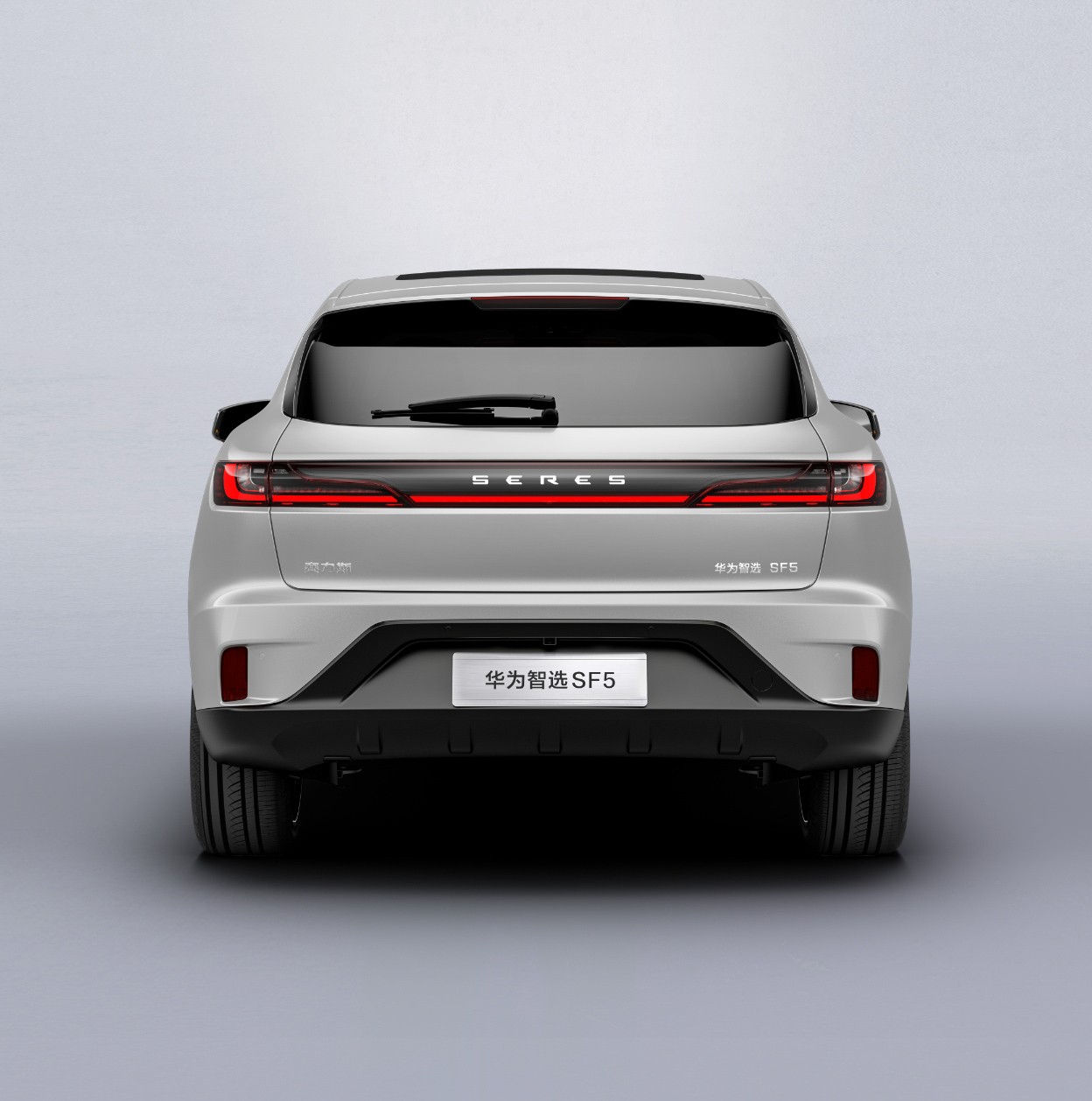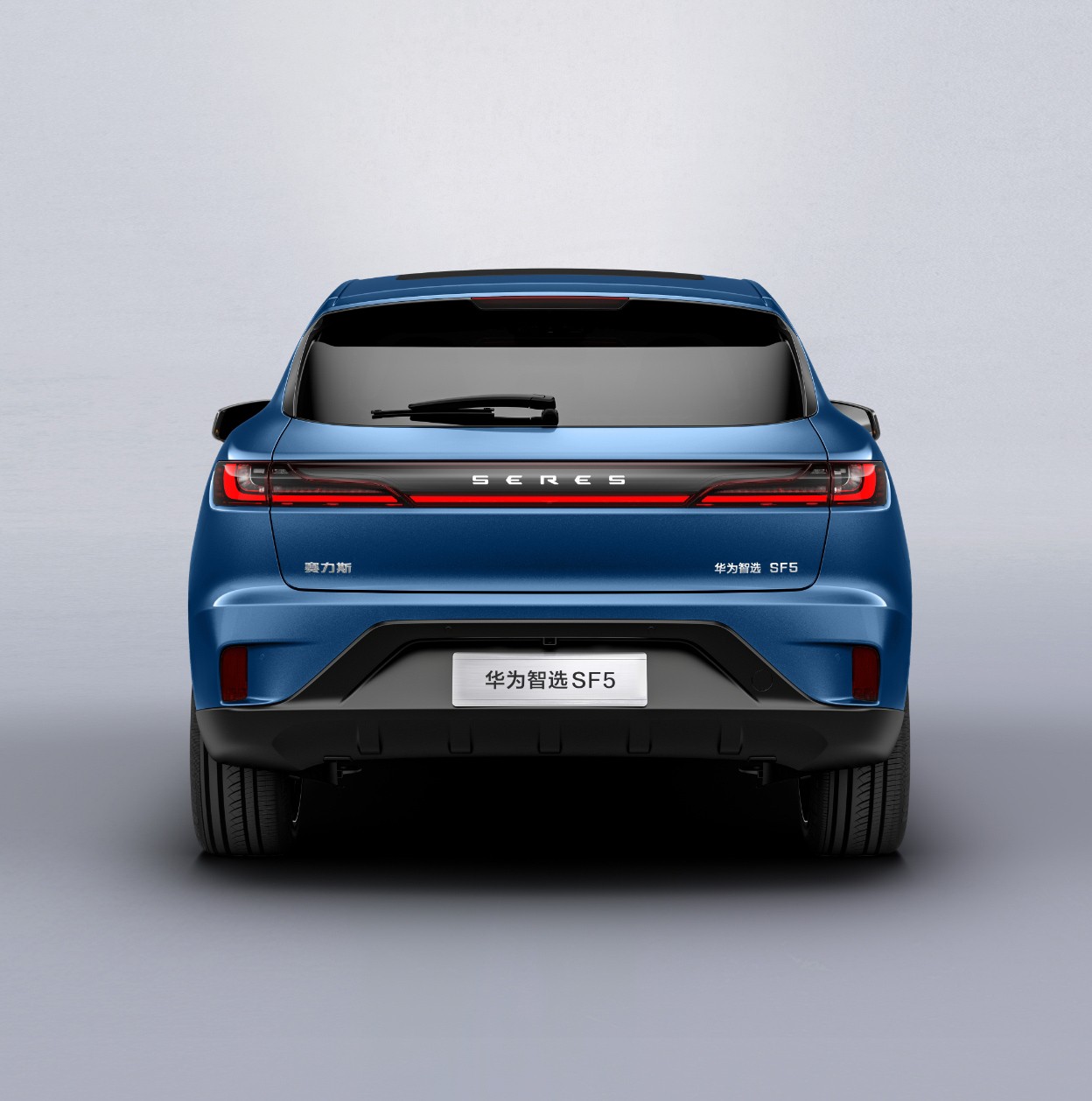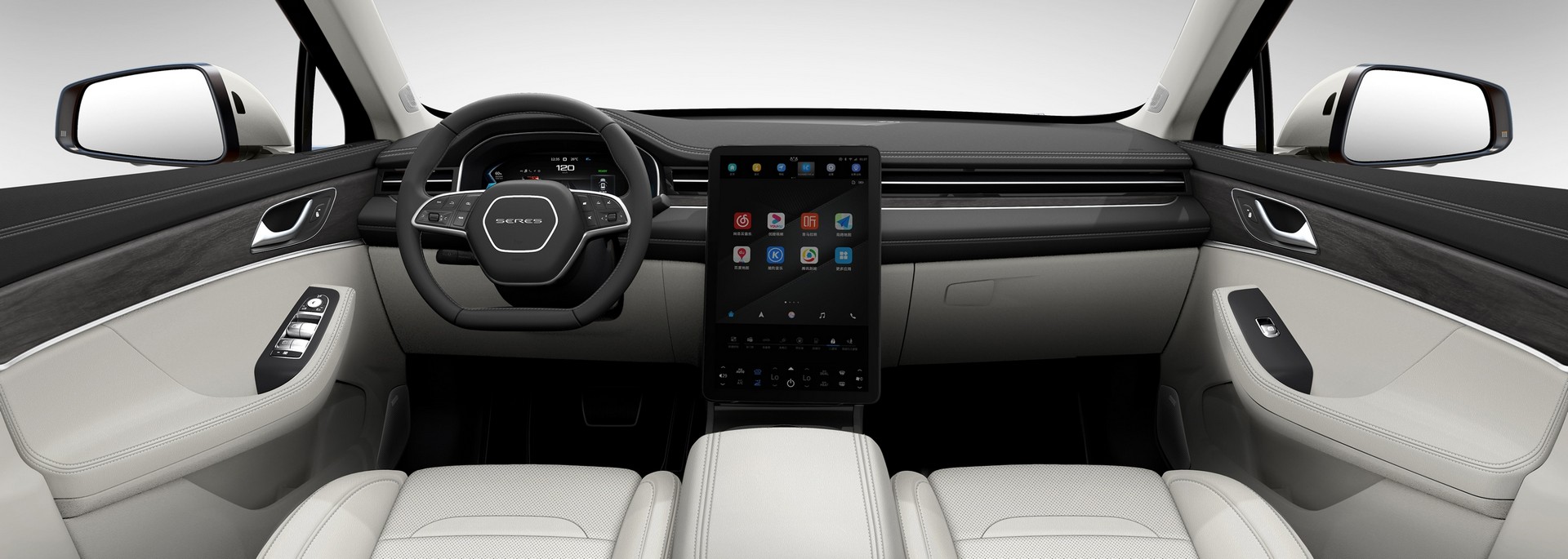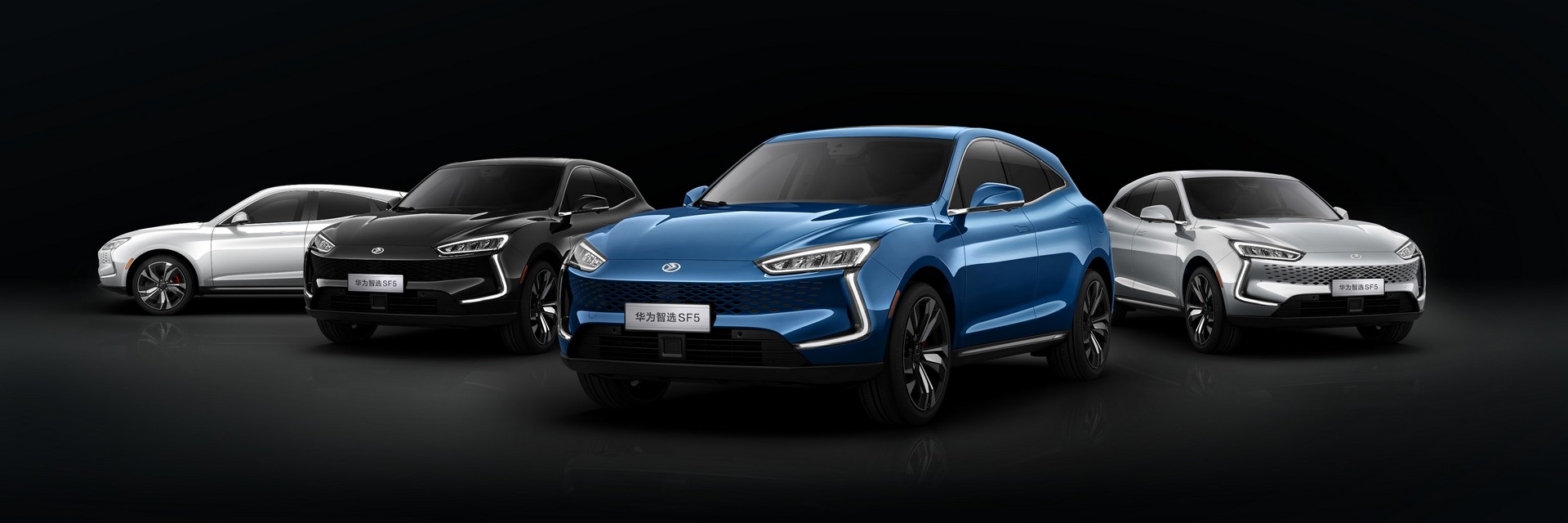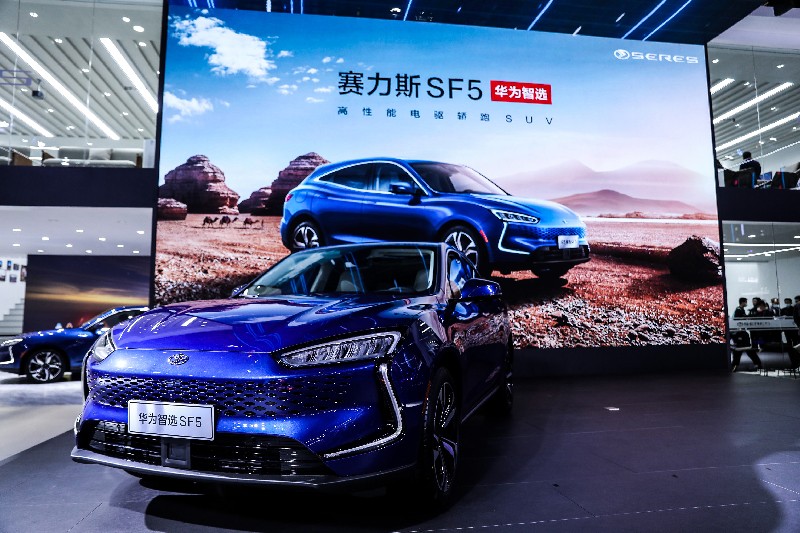Huawei is best known for making smartphones, but the Chinese tech giant plans to invest $1 billion researching electric vehicle and self-driving car technologies. As part of that push, at the Shanghai Auto Show, Huawei revealed the updated SERES SF5 electric crossover which it helped develop and which it will be selling through it’s flagship stores across China.
“This exciting announcement sets a precedent for both the consumer electronics industry and the new energy vehicle industry,” commented Richard Yu, Executive Director, CEO of the Consumer Business Group, Huawei. “In the future, we will not only provide leading smart car solutions to help partners build better intelligent vehicles, but also help them sell those vehicles through our retail network across China.”
Tell me more about the SERES SF5
Known as the SF5, the model is a range-extended crossover that was jointly created with Cyrus and will be sold under the Seres brand. While it’s not exactly a looker, the SF5 features sweptback headlights and a mesh grille that is flanked by distinctive LED daytime running lights. The model also has flowing bodywork, flush-mounted door handles and a compact greenhouse.
In terms of size, the SF5 measures 185 inches (4700 mm) long, 76 inches (1930 mm) wide, and 64 inches (1625 mm) tall with a wheelbase that spans 113.2 inches (2875 mm). These dimensions are somewhat reminiscent of the Audi Q5.
Also Read: Huawei To Invest $1 Billion Into EVs And Autonomous Car Technologies
Moving into the cabin, drivers will find a digital instrument cluster which resides behind a two-spoke steering wheel. The model also has wood trim, metallic accents and a rotary shifter. Other highlights include an ambient lighting system, a moonroof, and front seats with heating, ventilation and massage functions.
Given the model’s connection to Huawei, it’s not surprising to learn the crossover has been equipped with a high-tech infotainment system. It connects to smartphones within a matter of seconds and automatically transfers music and navigation information between the two. There’s also voice recognition technology and an audio system with 11 speakers as well as two subwoofers.
Speaking of sound, engineers paid special attention to reducing noise, vibration and harshness. As part of these efforts, the model features double-layer front glass and plenty of sound deadening material. The company says they enable interior noise levels of just 38 decibels at idle.
Getting back to technology, the SF5 features millimeter wave radar, ultrasonic sensors and an assortment of cameras. They allow for adaptive cruise control, traffic jam assist, automatic emergency braking, lane centering and forward collision warning.
What powers the SR5
The SR5 features a new electric drive range extension system that was developed by Huawei and Seres. “Equipped with HUAWEI DriveONE Three-in-One Electric Drive, the system is not only the optimal solution for reducing range anxiety, but also delivering world-class coupe performance,” said Huawei in a statement.
The model has a 1.5-liter four-cylinder engine that acts as a generator. It feeds a battery pack, which powers up to two electric motors that produce a combined output of 543 hp (405 kW / 551 PS) and 605 lb-ft (820 Nm) of torque. This enables the crossover to accelerate from 0-62 mph (0-100 km/h) in approximately 4.7 seconds.
Thanks to the range-extended powertrain, the SF5 can travel up to 112 miles (180 km) on electricity alone and 621+ miles (1000+ km) overall in the New European Driving Cycle. The vehicle can also act as a battery, which enables it to power everything from TVs to electric vehicles.
The SF5 is currently on display at the Shanghai Auto Show and will be available for test drives at Huawei stores starting this week. Deliveries are slated to begin next month and pricing begins at ¥216,800 ($33,356 / £23,935 / €27,716).
Correction: We’ve revised the title and added information for more clarity as the SR5 is not a vehicle designed by Huawei, but one it helped update and develop key features such as the extended range powertrain. We apologize for the confusion.








